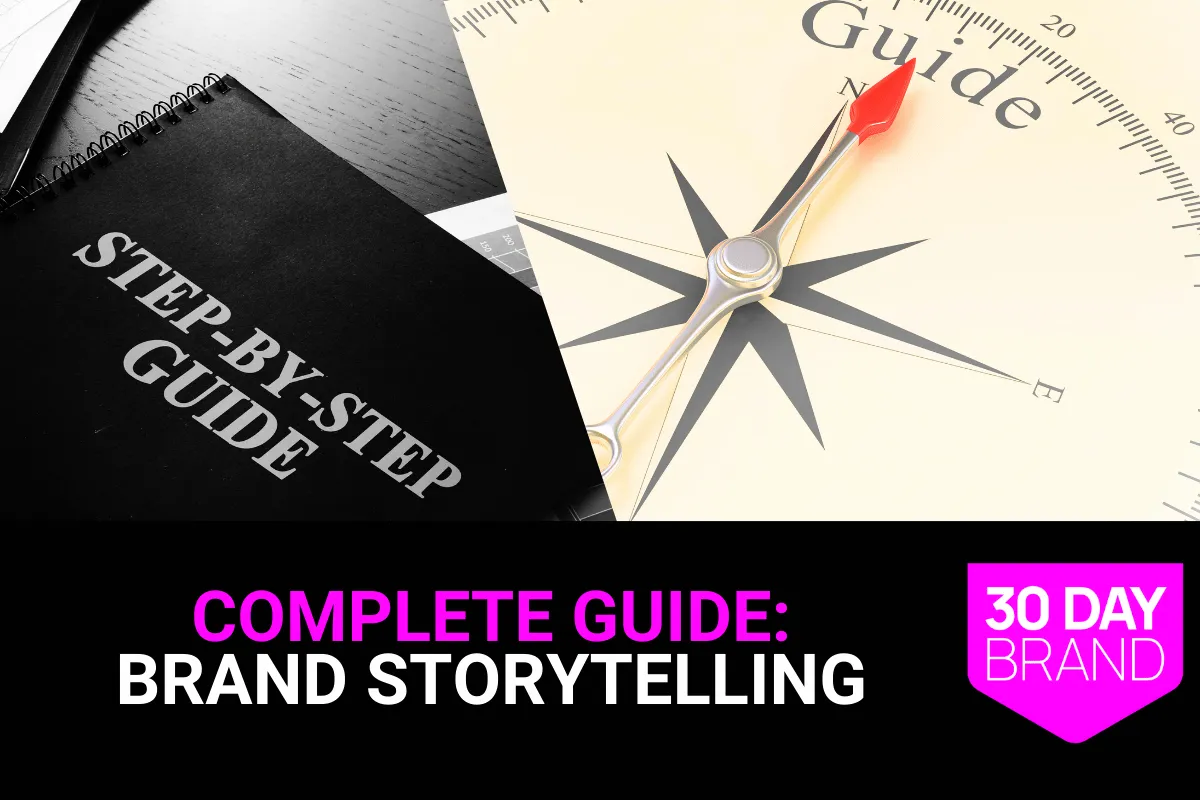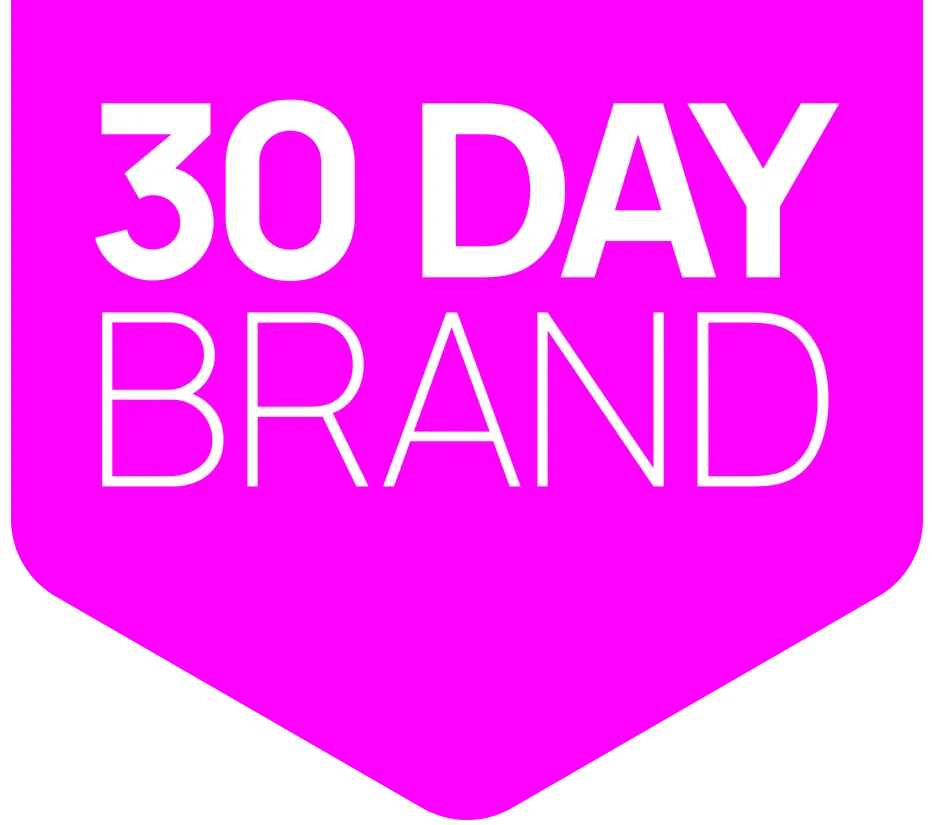
Brand Storytelling: The Complete Guide to Narrative Marketing That Converts
In a crowded market, founders cannot rely on features alone. Storytelling is what cuts through the noise, builds trust, and converts attention into action. 86% of consumers say authenticity matters when choosing brands (Stackla, 2023). As a solopreneur or founder-led B2B firm, your story becomes the competitive advantage that makes prospects believe you are the right choice.
Storytelling is not fluff. It is a structured method for guiding prospects from problem to solution. 55% of people buy after engaging with a brand story they love (Headstream, 2023). This guide explains why storytelling works, which frameworks to use, and how to turn your message into a predictable client acquisition system.
Brand Storytelling Overview & Definition
Brand storytelling is the use of narrative to clearly explain who you help, what you solve, and why you are the best guide.
For founders, it answers three questions prospects always ask: Do you get my problem? Can I trust you? What should I do next? When you answer those with a compelling story, you shift from chasing clients to attracting them.
73% of B2B buyers research vendors before first contact (Salesforce, 2024). That means your website and content do the heavy lifting. A clear story ensures prospects see you as the mentor who helps them win.
Brand storytelling matters most for founder-led B2B firms. You are often wearing too many hats—sales, delivery, operations, marketing. Without a system to tell your story consistently, you risk blending in. With it, you position your expertise as the obvious choice.
For deeper context, see our guide on B2B Branding.
Brand Storytelling Best Practices: 2 Hollywood Frameworks + Marketing Simplicity
Founders often overcomplicate storytelling. You do not need to master every screenwriting trick. You need to take lessons from Hollywood and apply them simply: frame your client as the hero, your brand as the guide, and your CTA as the call to adventure.
Item 1: Hero’s Journey in Marketing
Every Hollywood epic follows a path where the hero leaves their ordinary world, faces challenges, and returns transformed. In marketing, your customer is that hero. Your role is the mentor who provides tools and wisdom.
Define the hero: Know your ICP’s pains and goals.
Frame the villain: Show the obstacle or market chaos blocking them.
Offer guidance: Position your brand as the mentor with authority.
Call to adventure: Use a clear CTA to spark action.
When brands apply this structure, 55% of prospects are more likely to buy (Headstream, 2023). Mapping this narrative takes 1–2 weeks. See how it applies in Brand Storytelling for B2B.
Item 2: Save the Cat for Marketing Narratives
Hollywood screenwriter Blake Snyder developed “Save the Cat” to structure films audiences love. The same beats guide compelling brand stories.
Opening image: Show your client’s current frustration.
Theme stated: Example: “Clarity wins clients.”
Catalyst + debate: Prospects hesitate, doubt your system.
Resolution: Your brand provides the framework that delivers transformation.
Founders who apply these beats create more memorable campaigns. 68% of consumers pay more for brands they trust (Edelman, 2023). Expect 2–3 weeks to test these narrative arcs in your messaging. Learn more in our Brand Storytelling Framework.
Item 3: Marketing Simplicity Over Hollywood Beats
Most businesses do not need to replicate a feature-length movie. Effective marketing storytelling comes down to clarity.
Communicate clearly: State what you do and who you serve.
Differentiate: Share your unique selling proposition.
Build trust: Showcase testimonials, reviews, and authority logos.
Demonstrate expertise: Publish thought leadership through blogs, podcasts, or books.
Call to action: Invite prospects into the journey with a clear next step.
Clarity drives results. Companies with consistent messaging see a 23% revenue lift (Lucidpress, 2024). Many founders can refine their messaging in one week by auditing their homepage and sales copy. For a deeper dive, see Clear Business Messaging.
Brand Storytelling Implementation Guide
As a founder, you cannot afford vague storytelling. A clear process ensures your brand narrative works like a system, not guesswork. Here’s a step-by-step guide to building it.
Step 1: Define Your Customer Hero
What to do: Interview clients, run surveys, and study reviews.
Tools needed: CRM data, Google Forms, LinkedIn polls.
Time required: 1 week.
Expected result: A clear ICP profile with pains, desires, and goals.
Step 2: Identify the Villain (Problem)
What to do: Define the external, internal, and philosophical problems.
Tools needed: Competitor analysis, testimonial reviews.
Time required: 3–5 days.
Expected result: A precise articulation of what your hero is fighting.
Step 3: Position Your Brand as the Guide
What to do: Share case studies and your founder journey.
Tools needed: Website, brand deck, authority logos.
Time required: 1 week.
Expected result: Clients see you as empathetic and credible.
Step 4: Create the Plan (Solution)
What to do: Outline a simple process. Example: 30-day brand system.
Tools needed: Process map, brand messaging framework.
Time required: 2 weeks.
Expected result: Prospects understand a clear path to results.
Step 5: Craft the Call to Adventure
What to do: Place strong CTAs across touchpoints.
Tools needed: Landing pages, lead magnets, email funnels.
Time required: 2–3 days.
Expected result: Higher conversions because the hero knows what to do next.
Step 6: Show Stakes and Success
What to do: Publish testimonials and outcome-based case studies.
Tools needed: Video interviews, client success write-ups.
Time required: Ongoing.
Expected result: Prospects see risk of inaction and reward of choosing you.
For more tactical guidance, see How to Tell Your Brand Story.
Metrics & Measurement for Brand Storytelling
Storytelling is creative, but results must be measurable. Track these KPIs to see real ROI.
55% of consumers are more likely to buy after loving a story (Headstream, 2023).
73% of B2B buyers research vendors before first contact (Salesforce, 2024).
23% higher revenue comes from consistent brand messaging (Lucidpress, 2024).
86% say authenticity influences brand choices (Stackla, 2023).
40% more revenue comes from organic traffic versus paid ads (BrightEdge, 2024).
Engagement metrics: Website traffic, time on page, social shares, email opens.
Conversion metrics: Lead generation, sales, customer lifetime value.
Brand metrics: Awareness, sentiment, referrals.
Founders who track these numbers can spot weak points, refine messaging, and scale predictable results.
FAQ: Brand Storytelling
1. What is brand storytelling?
Brand storytelling is the practice of using narrative to clarify what you do, who you serve, and why you matter.
2. How does brand storytelling help founder-led B2B firms?
It creates trust and authority, helping you attract higher-value clients without relying only on referrals.
3. Why position the customer as the hero?
Because prospects respond when they see themselves overcoming a problem with your guidance, not when you talk about yourself.
4. Is storytelling only for consumer brands?
No. B2B brands with strong narratives see 23% more revenue (Lucidpress, 2024).
5. How do I measure the ROI of storytelling?
Track KPIs such as website engagement, lead volume, sales, and client lifetime value.
6. What if I don’t have testimonials?
Start with founder stories, then document early client wins as case studies.
7. How does storytelling tie to SEO?
Clear, engaging stories increase dwell time and backlinks, which improves rankings.
8. Is storytelling different from branding?
Yes. Branding is identity; storytelling is how you communicate that identity to inspire trust.
9. How long does it take to see results?
Founders often see pipeline improvements in 30–60 days with clear storytelling.
10. What tools support brand storytelling?
CRM, analytics, and frameworks like the 30-day brand system and business messaging framework.
For examples, see Brand Storytelling Examples.
Let’s Build Your Story: Next Steps
As a founder, you are already juggling too many hats. Marketing should not be another burden. A clear brand story helps you convert more clients while spending less energy.
Free Brand Audit: Run your free Brand Message Analyzer to see how your current story performs.
Brand Story Example: Visit michaelmurphy.com to see how Hollywood storytelling principles build authority in a personal brand site.
The time to tell your story is now. Your customers are waiting for a guide—show them it is you.










